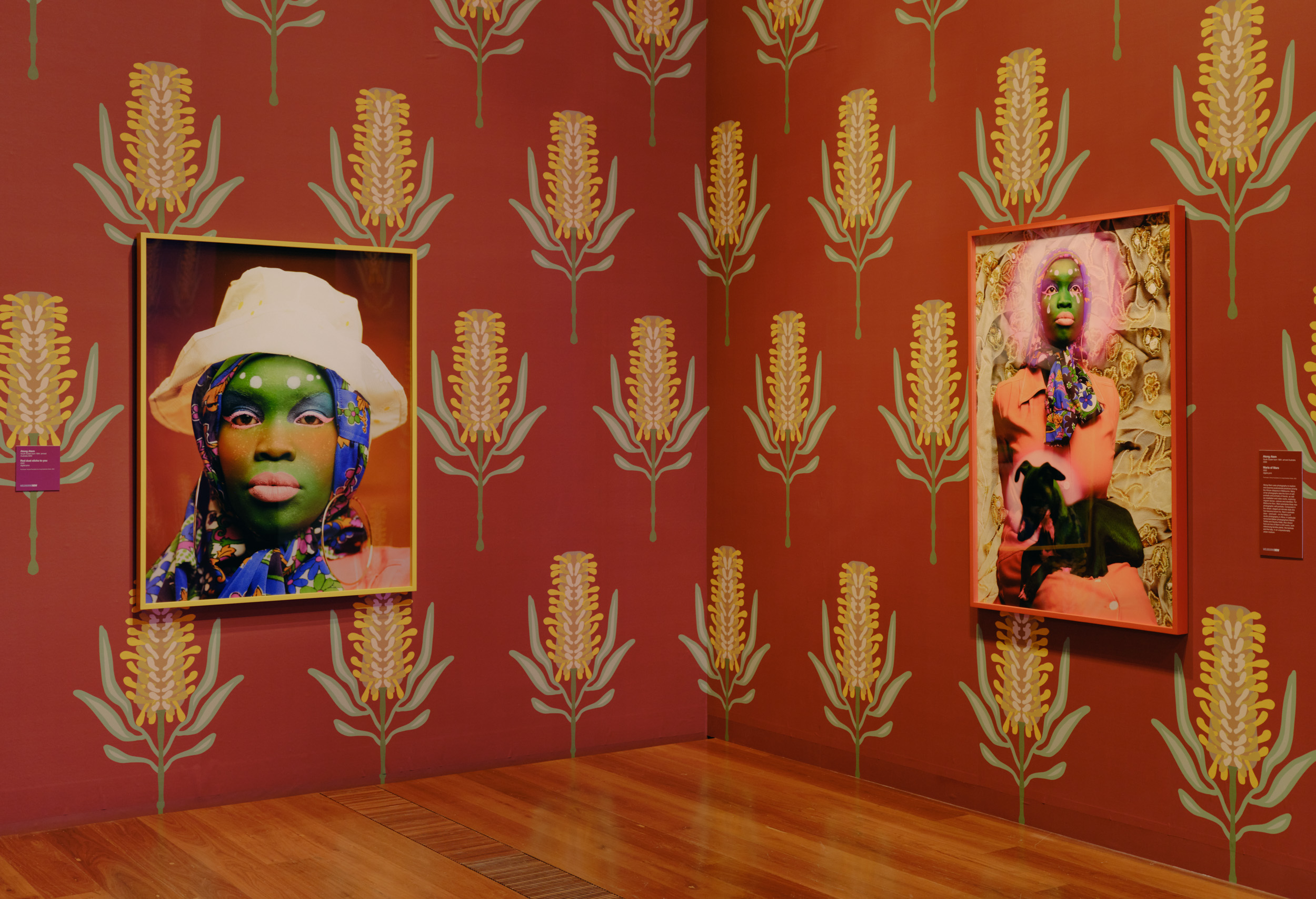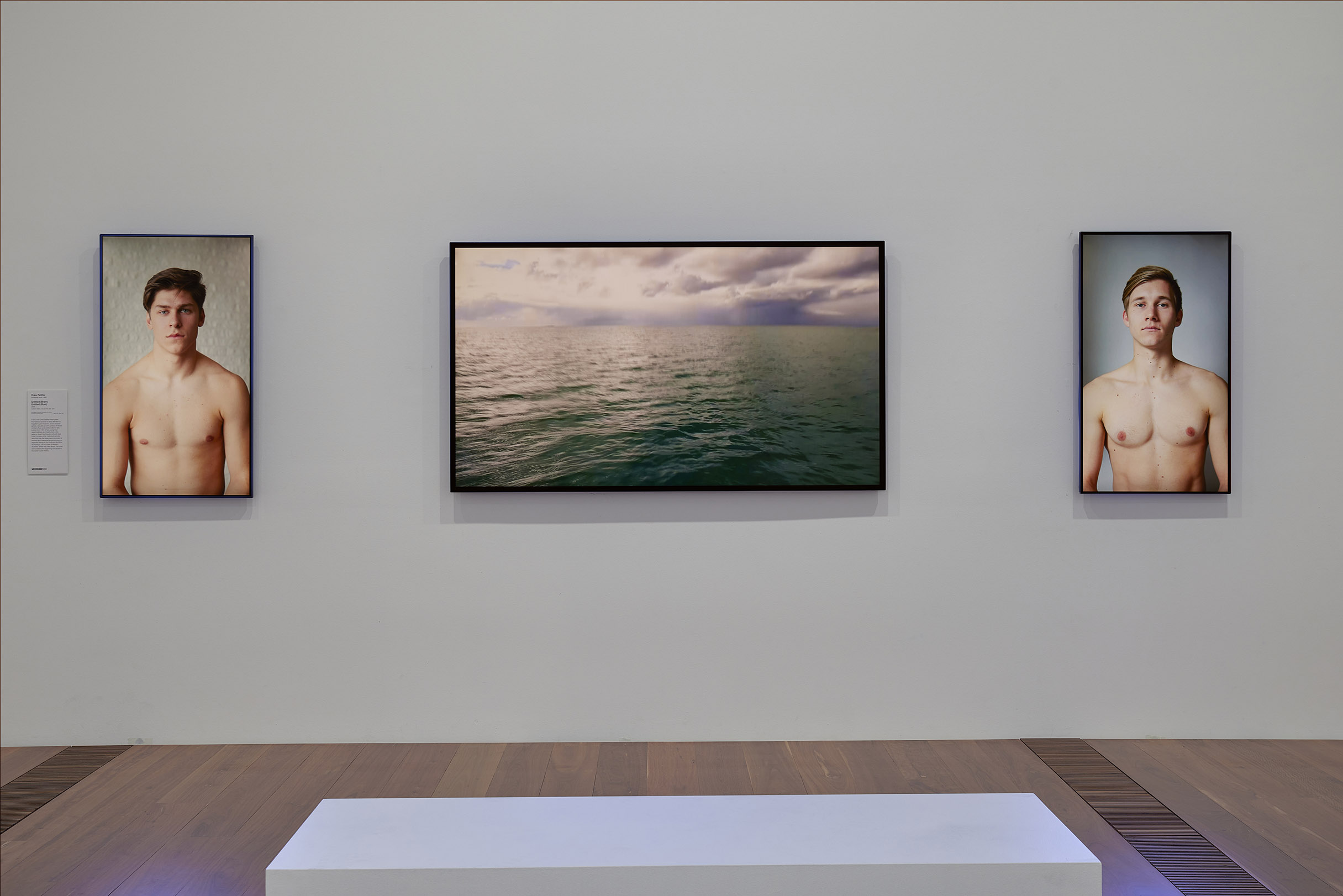Melbourne Now
Paris Lettau
Melbourne Now is old. Sure, it already happened ten years ago, but I mean literally. Of the 120 or so artists on display, a mere 6% are in their twenties.
Let’s put it another way. Melbourne art is a dysfunctional family, and the NGV is the home of its ageing father. The walls of his house are decorated with mementos of the past, a testament to his powerful influence over family history. While his embarrassing behaviour can sometimes cause discomfort, he still holds sway over his obedient children, whom he treats with affection and respect. For Melbourne Now, he has wandered the neighbourhood to see what the kids are up to.


First spotted are artists associated with the well-behaved Gertrude Contemporary, who are given pride of place. Scotty So (b. 1995) commands the thoroughfare from ground to level two, while Mia Boe (b. 1997) and Atong Atem (b. 1994) are handed generous space and resources—second only to the real-estate inherited by James Lemon (b. 1993)—to pursue ambitious installations of their respective painting and photographic practices (cue wallpaper machine). But spot the difference. (Boe eschewed what is practically an injunction to print wallpaper and produced her own stunning mural.)

The youngest siblings get a smaller patch in the Print Portfolio spread on the ground floor. Artek Halpern-Laurence’s (b. 1998) caustic cry to Upload me now! (2022) exudes an existential Catch-22 in the struggle for recognition by the fragmenting metaverse. Lama Lama artist, activist, and Twitch-streamer Rubii Red’s (b. 1998) White Australia has a Blak history (2022) honours the late and legendary Laurie Nilson’s slogan from the 1980s, reminding Victoria of the Federation’s best artistic source: Queensland.

There was a time when young artists practically graduated to the NGV. Its galleries are littered with heirlooms created by artists when in their twenties: Arthur Streeton’s Scheherazade (1865), Tom Roberts’s A Moorish Doorway (1883), Tudor St George Tucker’s Springtime Girl (1892), John Longstaff’s Lady in Grey (1890), E. Phillips Fox’s Portrait of My Cousin (1893). Or Aby Alton’s beloved nude maidens frisking in The Golden Age (1893), painted when the artist was just twenty-seven. The maidens seem to gambol off the walls and around the hearth (an incredible Carrara marble mantelpiece) of J Davies’s (b. 1994) impressive wall of photo documentation of their life in the queer community. (Davies’s work is also spoken to beautifully, skillfuly, by Christian Thompson’s Burdi Burdi (Fire Fire) (2023) across the room.)

As with all contemporary art, no collective identity, aesthetic or otherwise, surfaces in the new art of the new generation at the new Melbourne Now. Topics of concern are not unfamiliar: gender and sexuality; family history and cultural revivalism; diaspora and post-colonialism; identity and activism. Climate change and today’s world-reordering geopolitics appear unaddressed. Playful, self-certain sincerity is in; irony and cynicism are out.
All the badly behaved, cynical kids of Melbourne are therefore excluded. There’s no Asbestos. No Wet House. No rrealartt. No Centre D’Editions. No Savage Garden. No Hyacinth. Not a lick of Meow or Guzzler, the latter of which literally soiled itself in the backyard the same week Melbourne Now opened its front door for all the neighbourhood to see. Kicked out of home, the disobedient younger siblings are allowed to keep their cherished hand-me-down subcultural status. They’ll probably say the usual stuff about being cultural detritus, unrecognised prodigal children, etc.

None of this is to say that the mercurial muse of all art, youthfulness, escapes untouched by Melbourne Now. There it is in Drew Pettifer’s (b. 1980) soft-skinned seraphic subjects. Young-students also populate the video work of Ruth Höflich (b. 1976). But they are no match for the forever youthful elixir of cool, Claire Lambe (b. 1962), whose work characteristically reaches deep down into the supposed innocence, purity, and desirability of youth.
Fine, I admit it. I’ve misled you a bit. The exhibition-long artist film program by recess (led by artist Olivia Koh) almost doubles the representation of artists in their twenties, but the NGV has seen that they’re all presented on one screen, turn-by-turn, one week at a time. Was that on purpose? You’ll need an ounce of L’Oréal Paris Revitalift if you find the time to see them all.

Before you arrest me for elder abuse, let me affirm that I take all artists to be created equal, young and old. They are endowed with unalienable aesthetic rights, and amongst life and liberty is the pursuit of representation in the NGV. I honour the Lares and the Penates of the Melbourne household, rightfully given an entire wing of Melbourne Now: Damiano Bertoli (1969–2021), Virginia Fraser (1947–2021), Kate Daw (1965–2020), John Nixon (1949–2020). They are a golden thread woven through generations of artists in this city.
Look at those white-backed paintings as pure as the Nixon snow. Now there’s someone who connected with every generation in the family of Melbourne art. But the intergenerational gravity of Nixon feels weak in this mausoleum. Wait. What is this? My heart jumps suddenly and I leap up. Christ, I’m sitting on a human-sized DIY plywood coffin! One way to honour Nixon, I guess. Who else are we burying here?
Paris Lettau is a contributing editor at Memo.


